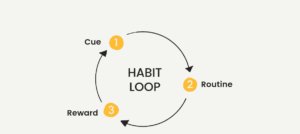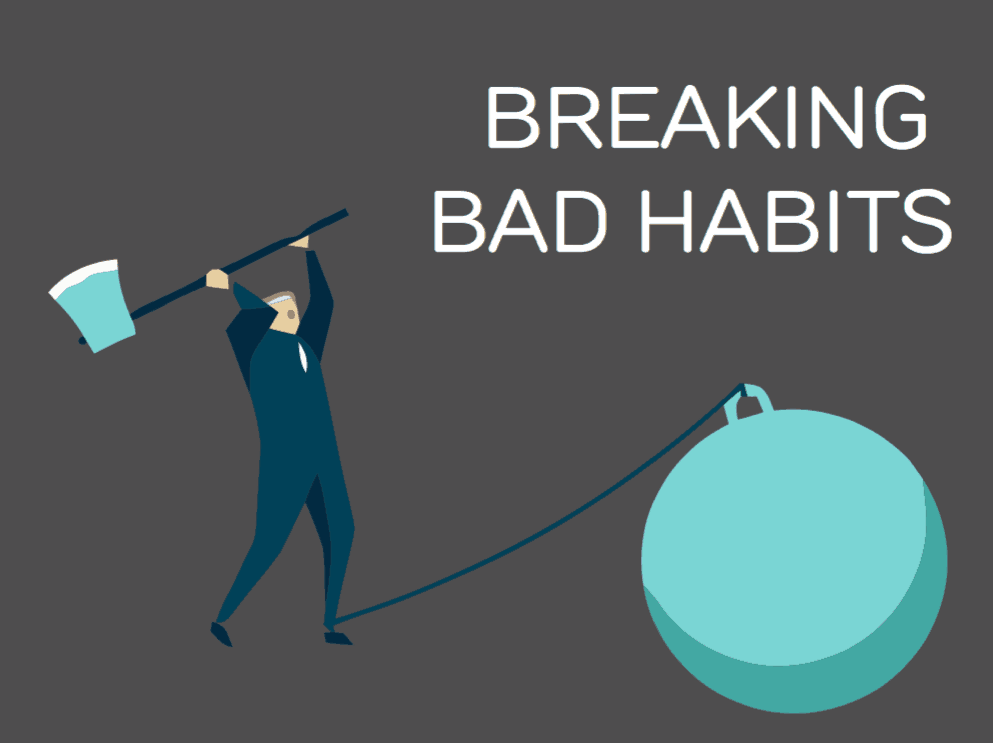Bad habits are something that we all struggle with. They are hard to break and can sometimes be difficult to even identify. In this article, we will discuss what bad habits are, why quitting them is difficult, and what are the 7 Steps to Changing a Bad Habit.
We will also hear from some experts in the field and share a case study to help illustrate how these steps can be put into practice. Finally, we will provide some resources for further reading on this topic.
Contents
Understanding Bad Habits

Bad habits are behaviors that we do regularly that harm our lives.
- They can be physical, like eating unhealthy foods or not getting enough exercise,
- Or they can be mental, like smoking cigarettes or being overly critical of ourselves.
There are many different types of bad habits and they can vary from person to person. However, there are a few common characteristics that they all share.
- First, bad habits are usually automatic and we do them without thinking.
- Second, they usually provide some sort of immediate gratification, like the rush we get from smoking cigarettes or the feeling of relief we get after overeating.
- Third, they are generally difficult to break once they become ingrained in our routines.
Why Quitting Bad Habits Is Difficult
Bad habits are difficult to break for several reasons.
- First, they become part of our routine and we rely on them to give us instant gratification or relief from stress.
- Second, they can be addictive, like cigarettes or drugs, and we can develop a strong psychological dependence on them.
- Third, we often have a misconception that bad habits are just a part of who we are and can’t be changed.
- Finally, breaking bad habits can be difficult because it requires a lot of self-discipline and motivation.
Taking The Steps to Change a Bad Habit

If you want to change your bad habit, you need to know what steps to take. The process can be divided into three main phases: preparation, action, and maintenance.
- In the preparation phase, you need to identify the bad habit that you want to change and set some specific goals for yourself.
- In the action phase, you need to put those goals into practice by changing your behaviors. And breaking the old routines that are associated with the bad habit.
- In the maintenance phase, you need to continue to work on your goals and make sure that you don’t slip back into your old habits.
Seven Steps

Here are our seven steps for changing a bad habit:
Step One: Make a Commitment
The first step is to commit to change. You need to be determined and motivated to succeed. If you’re not serious about changing, you’re going to find it difficult to stick with it in the long run.
Step Two: Identify the Habit
The next step is to identify the bad habit that you want to change. Be specific and make a list of all the behaviors that are associated with the habit.
Step Three: Set Some Goals
Once you’ve identified the habit, you need to set some specific goals for yourself. What do you want to achieve by changing this behavior? What are your end goals?
Step Four: Change Your Behavior
In the action phase, you need to put your goals into practice by changing your behaviors. This means breaking the old routines that are associated with the bad habit and replacing them with new ones.
Step Five: Stay Strong and Patient
Changing bad habits can be difficult, especially in the beginning. You need to be strong and patient and stay focused on your goals.
Step Six: Reward Yourself
When you achieve a goal, reward yourself with something positive and reinforcing. This will help keep you motivated in the long run.
Step Seven: Don’t Give Up
The most important thing is to never give up. Changing bad habits is a process that takes time and dedication. If you stick with it, you will eventually succeed.
Hearing From Experts
Many experts have written about bad habits and how to break them. Here are a few of their insights:
- “Bad habits are like a comfortable bed, easy to get into and hard to get out of.” – Unknown
- “The chains of habit are too weak to be felt until they are too strong to be broken.” – Samuel Johnson
- “You can’t change the direction of the wind, but you can adjust your sails.” – Jimmy Dean
- “The chains of habit are too light to be felt until they are too heavy to be broken.” – Warren Buffett
Case Study

Changing a Smoking Habit
To illustrate how the steps in our guide can be put into practice, we will use the example of someone who wants to change their smoking habit. This person has identified that they want to quit smoking and has set some specific goals for themselves. Such as quitting for good or reducing the number of cigarettes they smoke each day.
They have also created a plan of action, which includes things like:
- setting a quit date,
- removing cigarettes from their environment, and
- replacing the habit with a different activity.
They put their plan into practice and track their progress, making adjustments as needed.
In the maintenance phase, they continue to work on their goals and make sure that they don’t slip back into their old habits. They celebrate their accomplishments along the way and are eventually able to quit smoking for good!
Resources

There are many resources available to help you change your bad habits, including books, websites, and support groups. Here are a few of our favorites:
- The Seven Habits of Highly Effective People by Stephen Covey
- Change Your Brain, Change Your Life by Daniel Amen
- Smoking Cessation for Dummies by Allen Carr
- The Power of Habit by Charles Duhigg
Conclusion
Changing bad habits can be difficult, but it is possible. If you follow these seven steps and stay focused on your goals, you will eventually achieve success. Good luck!
A Word From Therapy Mantra
Your mental health — Your psychological, emotional, and social well-being — has an impact on every aspect of your life. Positive mental health essentially allows you to effectively deal with life’s everyday challenges.
At TherapyMantra, we have a team of therapists who provide affordable online therapy to assist you with issues such as depression, anxiety, stress, workplace Issues, addiction, relationship, OCD, LGBTQ, and PTSD. You can book a free therapy or download our free Android or iOS app.


